In the beginning were the singles, then Harley-Davidson brought out its first V-twin in 1909. Along came the knuckles, which begat the panheads, which begat the shovels and the Evolution engine, followed by the Twin Cam 88. The V-Rod introduced the Revolution engine, and now the Dyna series has been so completely revised for 2006 that (to rip a headline from today’s newspapers) it’s obviously a product of intelligent design. The Dyna not only gets new frame geometry and a new fork, but (gasp!) it’s the first Harley-Davidson to come with a standard six-speed transmission. And best of all, it all really works.
To understand how far Harley-Davidson has come with the new Dyna, you have to appreciate the rap against Harleys from the distant past: they suffered from engine vibration, oil leaks, poor brakes, clunky shifting, heavy clutch pull and a lack of cornering clearance. In the early 1980s and continuing through the Evolution series, H-D dealt quite successfully with the first couple of problems through improved manufacturing techniques and rubber engine mounting. The introduction of the five-speed transmission lowered engine rpm in high gear, and this, along with belt final drive, delivered smoother riding.
More recently, Harley-Davidson has introduced four-piston brake calipers, which were a huge improvement over the anti-stop brakes of the past. Now for 2006, all Harleys get the mechanical changes that result in a lightened clutch pull and improved shifting. Which leads us finally to the total revamp of the Dyna series.
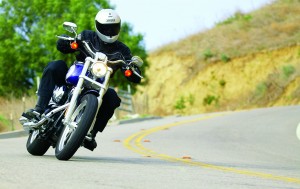
Like you, we thought that the Dyna was a curious choice to be the first model to receive the Cruise Drive six-speed transmission, so I asked a Harley-Davidson spokesman about it. He explained that the Dyna was one of the oldest models in the fleet, was thus most urgently in need of upgrading. You may recall that Harley-Davidson has previously offered a six-speed as a bolt-on accessory, but the spokesman pointed out that this new standard box is in no way related to the accessory tranny. It has totally different gears and cases, and the new transmission will not retro-fit previous models as certain changes have been made to the Twin Cam engine in the Dynas to better incorporate that new tranny.
Finally, when I observed that I expected the six-speed to eventually proliferate throughout the Harley Big Twin lineup, he cautioned that he hadn’t said that, and that he would not make such a prediction. OK, after 28 years of dealing with PR people I know the game-however, if six-speeds don’t eventually proliferate throughout the Big Twin lineup, I’ll eat your black T-shirt.
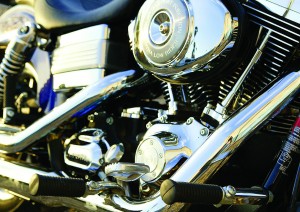
Walk around the new Dyna Low Rider, and notice that little “six speed” emblem on the transmission. The changes to the Dyna’s Twin Cam engine were made, H-D reports, to both interface with the new six-speed and to “enhance overall customer satisfaction” with the engine. The cam-plate design has been improved with a new roller chain, plain cam bearings and a new hydraulic automatic chain tensioner. The oil pump has improvements that, according to H-D, give it 10 percent more flow and 23 percent more scavenging capacity. The engine gets new adapters, one for the integral oil filter and another for the oil cooler. That new interface between the engine and transmission incorporates integral oil passages. A new inner and outer housing on the primary drive incorporates a new automatic primary chain tensioner that eliminates the need for chain adjustments and the inspection cover. Finally, the primary drive ratio has been raised from 1.44:1 to 1.353:1.
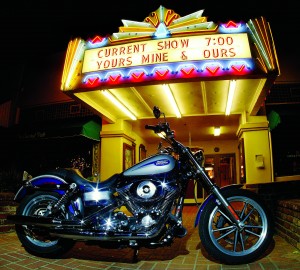
The seat is deeply dished, which is how the Low Rider earns its 26.8-inch seat height and name; no Dyna model is lower. Rubber-mounted Harleys have always offered a good bit of shaking in the seat at idle, and the ’06 Low Rider is no exception.
The pull on that cable-actuated clutch lever is now delightfully easy, and the bike goes into gear just as easily. The speedometer sits above the tach on that broad tank, and by the time it indicates 2,500 rpm the engine is already generating a good amount of torque.
Now comes the good part‚Ķlet out the clutch, start stirring that new gearbox with your left foot and shifting is quick, clean and with minimal effort. H-D tells us that the reason for this new buttery shifting is because those old, heavy moving gears that caused the shift have been replaced by new sliding steel “dog rings” that weigh much less. By lightening the mass, shift changes are quicker and smoother, the throw is shorter and the effort required is less. It’s the best-shifting Harley I’ve ever ridden.
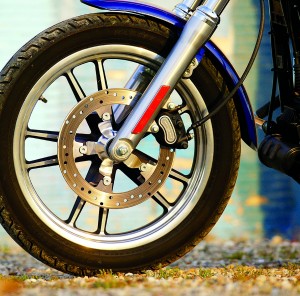
Take this bad boy out on the road (wait, isn’t that another Harley model?), and you’ll quickly come to appreciate its other changes. The frame remains a mild-steel, tubular affair with a rectangular-section backbone, but geometry has been revised. Rake angle has been tightened to 30.5 degrees with 4.5 inches of trail, as opposed to 32 degrees and 5.18 inches on last year’s Low Rider. Last year’s 65.5 inch wheelbase has been trimmed to 64.6 inches, all in the interest of quicker, more responsive steering.
Out on my favorite twisty road the more responsive steering was immediately evident, as the Low Rider felt much more precise and focused as opposed to the lazy imprecision of previous years. There’s also adequate cornering clearance now to allow you to have fun before parts start to drag-so long as you’re smooth in the corners.
Part of the Low Rider’s style is that it looks as if a Sportster fork has been grafted onto a Big Twin, which gives it that airy look up front backed by that beefy rear end. New this year is the 49mm fork, a stouter unit that replaces the Low Rider’s previous 41.3mm fork. As for suspension, the new fork rigidity contributes to that more secure handling, but fork action feels much the same. The fork performs well over the easy stuff, but reacts to big bumps and dips with an excess of compression damping. The same goes for those chrome-covered shock absorbers, which have only preload adjustments. They’re well controlled, but also far from plush.
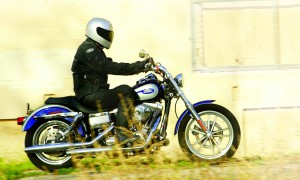
The other problem is that despite its two-point rubber engine mounting system, the Low Rider had an annoying vibration band at around 3,000 rpm. It was apparent enough through the seat to blur my vision, and because this rpm corresponds to an indicated 72 mph in sixth gear it got in the way of some highway touring. With that said, I have not noticed this vibration band with any other Big Twin Harley in recent memory, and have to conclude that it was likely an aberration on this particular bike rather than representative of the entire Dyna line.
Not new but equally welcome is that the Dyna carries H-D’s four-piston brake calipers on both the front and rear, which produce powerful stops even with the single discs.
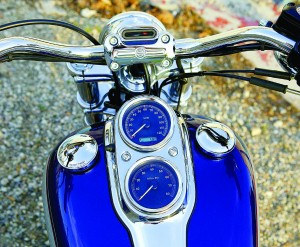
The “evolution” concept as practiced by Harley-Davidson is obviously alive and well with the 2006 Dyna line. Every change has made the bike better rather than just different. We’ll let you decide the evolution vs. intelligent design question. What matters to us is that the thing flat works.








I previously bought a 2006 Harley Dyna Low Rider. I was deeply concerned about the cam tensioners being spring-loaded. The upgrade that was made to the hydraulic tensioner put me at ease. I will check them nonetheless to make sure but I definitely feel better about this issue. I have 20500 miles on the bike and I deeply love the bike so I didn’t want any engine trouble happening